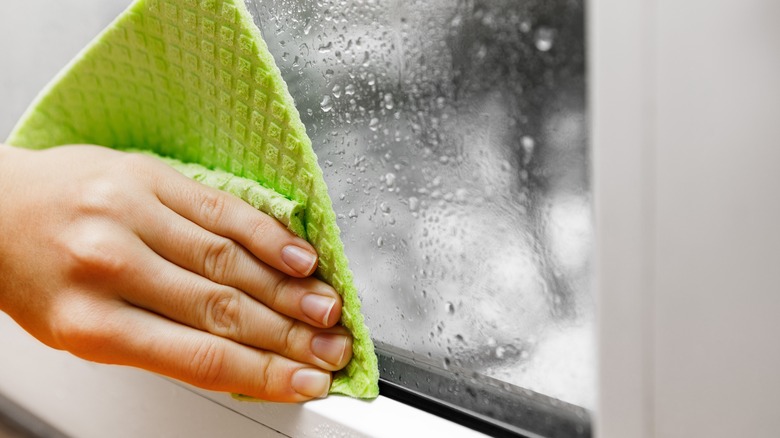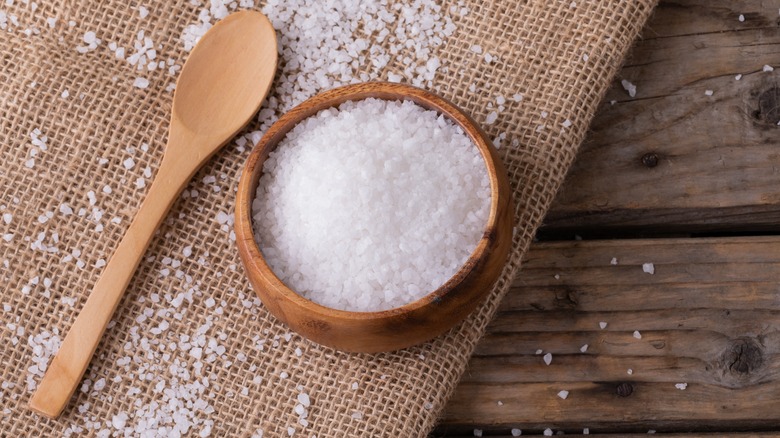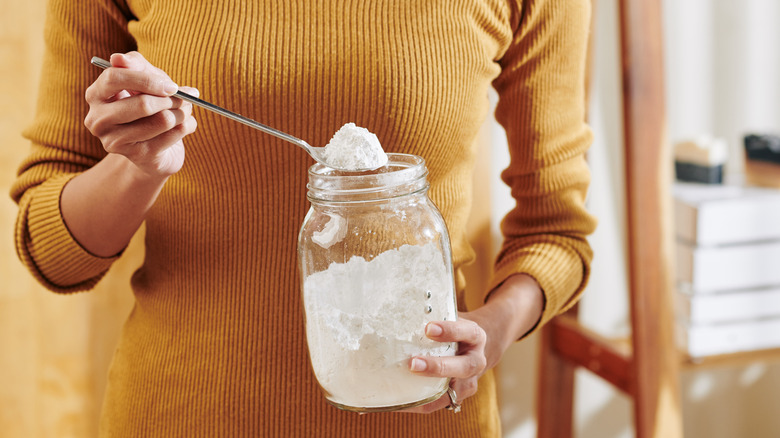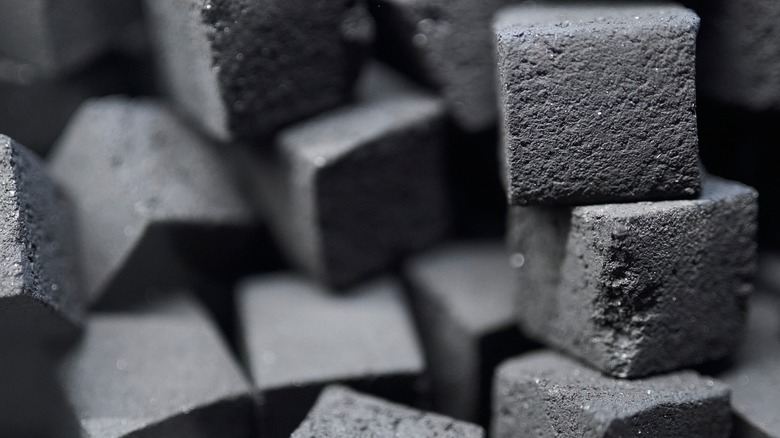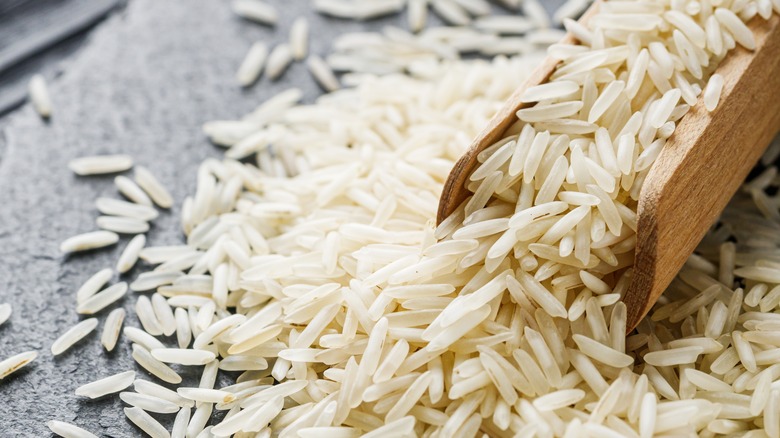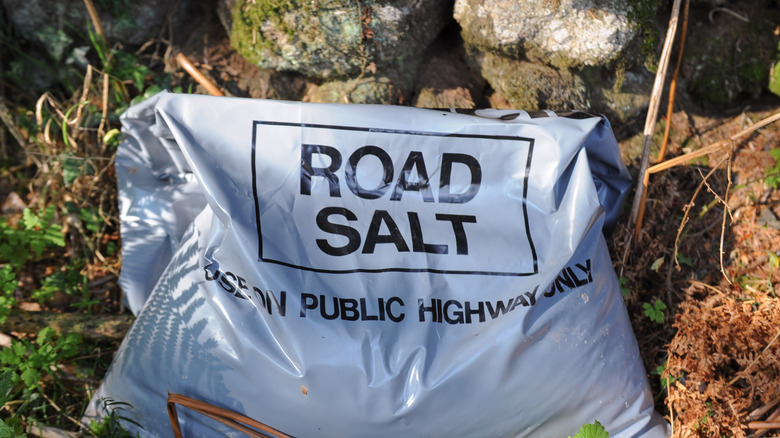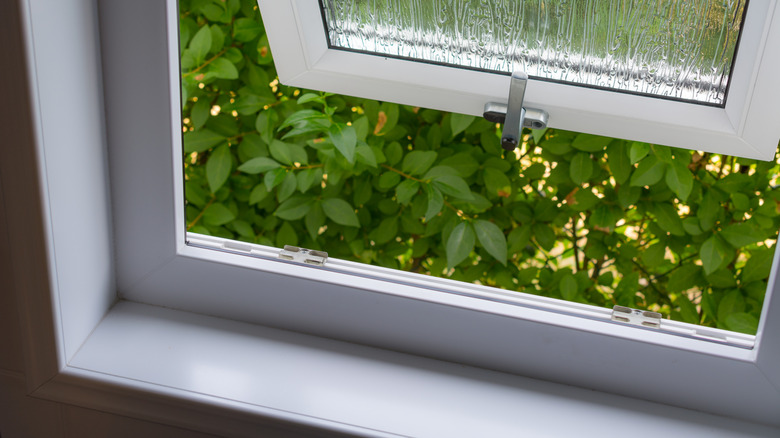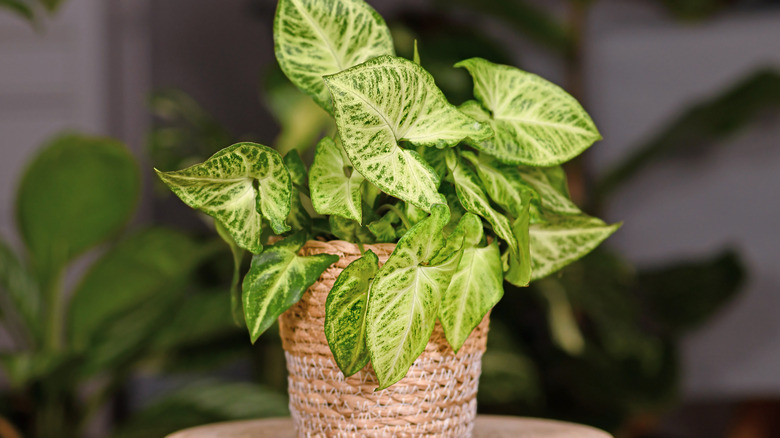Naturally Dehumidify Your Home With These Simple Tricks
Is high humidity in your home dampening your spirits? Is a clammy climate leaving you dripping with discontent? You're not alone. An excess of moisture in the home can be problematic in several ways. Not only can it cause issues with mold and mildew, but it can also encourage pests like roaches and dust mites to set up camp on your property.
According to the EPA, you should maintain a relative indoor humidity level between 30% and 50%. Investing in an electric dehumidifier is one solution to combat high levels of moist air, but this can ramp up electricity bills. Fortunately, there are plenty of natural ways to dehumidify your space. Utilizing some of the items you probably already have on hand can make for more comfortable living conditions. You may never have considered that old coffee creamer or bag of rock salt could be repurposed in the war against wet air. But, these are just a few of the natural items you can actually use to dehumidify your home.
Rock salt absorbs and stores water
As a hygroscopic material, rock salt can absorb moisture. It draws the water content from the air and binds it, effectively operating as a natural dehumidifier. As a commonly used and inexpensive product, rock salt can be a great way to dehumidify your room naturally. It's less refined than table salt, making it a more organic and more effective option. So, make sure to reach for the correct container if you want to try this trick.
First, you will need two plastic buckets like these from Walmart, a drill, and a large bag of rock salt. Take one bucket and drill several holes into the bottom and lower sides. Pour your rock salt into this bucket and place it into the other, intact, bucket. The rock salt will absorb moisture from the air which will then drip through the holes of the first bucket and into the bottom bucket. You will need to periodically empty the bottom bucket to keep the dehumidifier working. When the salt becomes saturated to the point that it no longer drains water into the second bucket, you'll need to throw it out and replace it with a fresh batch.
Baking soda can dehumidify cupboards
Levels of high humidity in cupboards and cabinets can cause problems with mold, but this can be easily avoided with this natural remedy. Baking soda is well known for its absorbent properties and is commonly used as a natural cleaning product around the home. Like salt, baking soda draws moisture from the air. It can simultaneously absorb odors, making it a great non-toxic dehumidifier for refrigerators or damp closets.
To create your own natural dehumidifier with baking soda, simply open a box of this cooking ingredient and leave it in a small, enclosed area like a cabinet or a pantry. Alternatively, pour some baking soda into a bowl or open container and allow it to work its magic. The powder will attract any excess moisture in the air and form a crust on top to show it has been absorbed. You can occasionally stir the baking soda to give it a refresh and keep it working. Once the baking soda has formed a solid lump it will need to be replaced.
Leftover coffee creamer works as a dehumidifier
Ever noticed how coffee creamer clumps together in the container? That's a result of the fact that it absorbs moisture. It has drying properties so it can draw water from the air, leaving the surrounding space less damp. Coffee creamer, like baking soda, works well as a humidifier in small spaces like cupboards and closets. It's inexpensive and readily available, so consider using this as a natural alternative to store-bought dehumidifiers.
To use this trick you'll first want to be sure you've got the right coffee creamer. Avoid any type that contains dairy, since this will go bad when left open in a closet, leaving you with a nasty smell. Pour your non-dairy coffee creamer into an open tub and leave it in your humid space. You'll know that it has absorbed excess moisture when it turns sticky. Be careful to avoid spilling it or having it come into contact with soft fabrics like clothing. Once the creamer has become sticky, throw it away and replace it.
Charcoal bricks help to eliminate moisture in the home
The same charcoal bricks you use in a grill can also be used inside the home to remove excess moisture from the air. Since they also absorb odors, these are a good choice for humid bathrooms or musty basements. These work as natural dehumidifiers because they are porous and can suck up droplets of water vapor. So, if you're looking for a way to make use of your leftover charcoal briquettes from last summer's cookouts, try this trick to improve the air quality in your home.
Simply place a few bricks in the bottom of a bucket or tub and set them in the corner of your damp room. They will absorb and hold moisture and need to be replaced every few months. If you don't have space for a charcoal-filled bucket, or you want to use this trick in a more hidden way, you can insert a brick into an old sock with holes cut into it. This will allow air to be drawn into the sock, and the charcoal brick will absorb and store it.
Uncooked rice sucks up humidity from the air
Rice is not only a versatile cooking ingredient, but it also doubles up as a natural dehumidifier. Since uncooked rice is hygroscopic, it can draw in vapor from humid air and hold onto it. If you have a bag in the pantry that's past its prime, you can put it to good use in various other spaces around your home.
To use rice as a DIY fix for humid spaces, fill the foot portion of an old pair of pantyhose with the uncooked grain and secure the area at the knee with an elastic tie. The rice will gradually absorb moisture from the air to help prevent mold from becoming an issue in humid storage spaces. Alternatively, you could hang it in the fridge to absorb excess moisture and keep your food fresh. You can even use uncooked rice to keep your tools rust-free in a damp basement or garage.
Make a DIY dehumidifier with kitty litter
Kitty litter is designed to absorb moisture and odors. Ordinarily, pet owners use this product in a cat litter tray to keep the smell of pet waste at bay. And, these same properties make kitty litter a useful dehumidifier. Be sure to choose a natural option such as kitty litter made from clay, pine, corn, or wheat. This will keep your dehumidifier natural and prevent potential issues with inhaling chemicals.
To dehumidify your home with TikTok's budget-friendly trick, pour cat litter into a tray and set it aside, for example on a shelf. You can also make smaller DIY kittie litter dehumidifiers for enclosed spaces such as linen drawers and closets. Fill some old pantyhose with cat litter and secure them with an elastic band or piece of string. Then, leave it in your chosen damp location and replace it every few months.
Road salt naturally dries out humid air
Road salt is an incredibly effective natural DIY dehumidifier that can be used to treat large rooms. It is widely available to buy in supermarkets and hardware stores through winter because it's typically used to melt snow. However, you can also buy it at any time of year under the name calcium chloride.
To use these grains as a dehumidifier you'll need a bucket along with a container or an old sock. Road salt absorbs so much water that it dissolves, which can make it a messy choice if you don't set up your DIY humidifier correctly. First, drill a few holes in a smaller container where water will be able to seep out. Then, fill it with road salt and position it over a larger bucket to collect the water. Alternatively, fill an old sock with rock salt and secure it tightly at the open end. Suspend the filled sock over a bucket so that it can collect the water. The bucket will need to be emptied periodically, and the container or sock will need to be refilled when the salt has dissolved.
Combat humidity by improving ventilation
Often the simplest solution is best. In rooms such as bathrooms where humidity is typically at its highest, opening a window can make a huge difference. This provides the musty air with an escape route and enables fresh air to enter your room. Ensure you are opening your windows the right way, for example, if you have two windows in a room you can open them together to encourage a cross-breeze to work through the space. This will allow for even more effective ventilation to get rid of lingering damp smells.
If possible, open a window whenever someone showers as this will allow excess moisture in the air to escape. Even if you don't have a window in your bathroom, creating a cross breeze in nearby rooms can increase the airflow. The key to this trick is monitoring the humidity levels outside. If they are higher than the ones in your house, this practice could backfire and increase the moisture in your interior space.
The right houseplants can help in humid environments
"Houseplants are the most beautiful natural dehumidifier you could possibly get," says Vanja Barbul of Barbulliano Designs. She explains that this trick works because humidity is reduced "through a plant's foliar uptake. In this way, the plant absorbs moisture through the stoma (tiny pores) in the leaves. This moisture moves into the vascular tissue and travels down the roots."
Certain plants work as natural dehumidifiers and thrive in humid environments, making them ideal for damp rooms like bathrooms and kitchens. For example, arrowheads can lower humidity in bathrooms without windows where more ventilation simply isn't an option. Or, you can use other popular choices like peperomia, praised by experts for its ability to absorb a lot of moisture. Barbul notes the features of English ivy that are perfect for tight, humid spaces explaining, "This easy-growing plant is excellent at reducing mold and as well as air toxins. They look great hanging or climbing."

